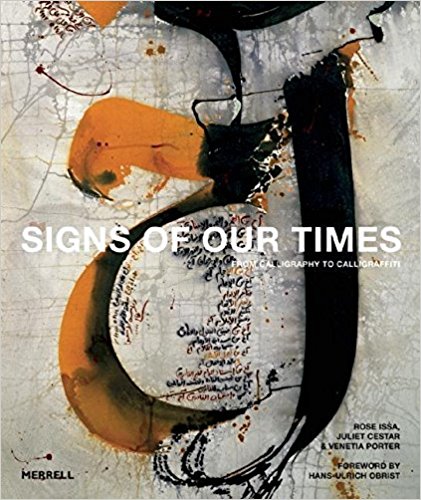
Signs of Our Times: From Calligraphy to Calligraffiti
Lee Lawrence
Rose Issa, Juliet Cestar and Venetia Porter
2016, Merrell, 978-1-8589-4652-8, $70 hb.
In the late 1990s, Princess Wijdan Ali of Jordan introduced the notion of "calligraphic school" of modern art characterized by artists' use of Arabic writing (see AramcoWorld M/A 97). Even though none of the authors mentions Wijdan's work on this subject, their book is nonetheless a continuation, showcasing the range of work in this genre to date. Venetia Porter of the British Museum introduces the historical arc of Arabic writing, while Juliet Cestar provides in a coda a chronology that relates select milestones in art to historical developments. In between, independent curator, writer and publisher Rose Issa discusses the organizing principle for the book "Innovation" (1950s–'70s), "Exploration" (1980s–'90s) and "Circumnavigation" (2000–'15). The 43 artists she selected occupy most of the book. She represents each with three to six works, a short biography and quotes from the artist. Her selection drives home the astounding variety of artists' relationships to Arabic writing and will serve as a useful reference.
You may also be interested in...

Ancient Egyptians Still Have Things to Teach Us
Socrates and other Greek thinkers admired Egypt for its philosophical tradition. This new translation of a manuscript as old as the pyramids shows us why.
The Great British Bake Off Winner Nadiya Hussain Gathers Global Recipes in Culinary Celebration of Ramadan
Nadiya Hussain's diverse recipes highlight the global unity of Muslim cultures and cuisines.
British Library’s 500-Year-Old Nizami Manuscripts Shed Light on Power of Art and Poetry in 12th-Century Herat
Persian and Mughal scholar and specialist Barbara Brend presents a comprehensive study of one of the most highly esteemed works of Persian Literature.